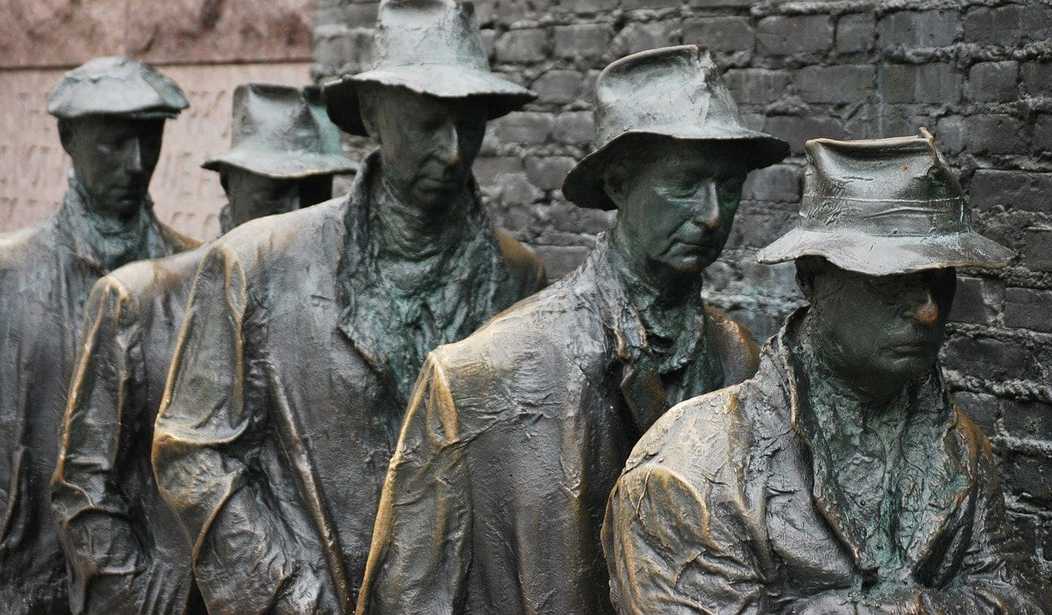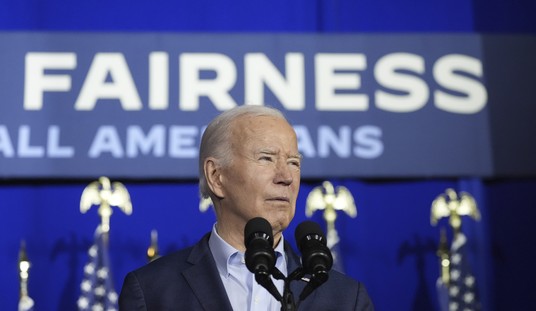Left-leaning economists and politicians like Bernie Sanders are constantly warning about income inequality and America’s worrisome decline in economic upward mobility. They are right to worry, but their big-government solutions would likely make things worse — and they often fail to recognize the welfare system’s perverse incentives that contribute to the problem in the first place.
This week, the Archbridge Institute released an important report detailing how a welfare “marriage penalty” contributes to the problem and how the government should fix it. The report focuses on reforming the Child Care Assistance Program (CCAP), which currently incentivizes family breakdown and the absence of fathers from their children’s lives, a key factor in the loss of economic upward mobility.
“The strength of the nuclear family is inextricably linked to the attainment of the American Dream. Unfortunately, government programs like CCAP effectively punish married couples for having children, undermining their financial security and chances at upward mobility,” Gonzalo Schwartz, president and CEO of the Archbridge Institute, told PJ Media. “It is past time for federal and state policymakers to reform welfare in a way that puts American parents and children first, making the American Dream more attainable for all.”
In the report, research fellow Willis Krumholz explains how fatherlessness harms upward mobility, how programs like CCAP disincentivize intact families, and how the government should reform the program.
“One of the greatest challenges confronting America in the twenty-first century is persistent inequality in income and wealth, and the decline in upward inter-generational social mobility—the ability to be born poor and achieve a higher socio-economic status later in life,” Krumholz explains.”There are certainly several contributing factors to the decline in social mobility, but a substantial indicator of a poor child’s ability to climb up the socio-economic ladder later in life is having a father in the home.”
Regardless of any moral arguments in favor of marriage and a father’s responsibility for his children, data suggests that “marriage is integral to maintaining fathers in the home. Cohabitating unmarried fathers are much less likely to maintain a stable family structure compared to married fathers. Although divorce can also be damaging to children, the instability of cohabitation ends up damaging many more children than does divorce.”
‘Poor No More:’ a Blueprint for Dismantling the ‘Welfare Industrial Complex’
Tragically, marriage has become unpopular among the bottom half of America’s income earners. According to the CDC’s National Center for Health Statistics, about 40 percent of American children are born outside of marriage. Only 9 percent of children grew up without their fathers in 1960, but today more than 25 percent of them grow up without their fathers. While parents are usually in a relationship or cohabiting when the child is born, they often break up while the child is still young. Mothers tend to get custody and the kids do not usually maintain a close relationship with their fathers.
As Krumholz explains, “a fractured family is often interchangeable with ‘fatherlessness’—the widespread phenomena of children who have no close relationship with, or sometimes even knowledge of, their biological father.” Children who grow up without their fathers in the home are three times more likely to have been in jail before age 30, a third more likely to drop out of school or perform poorly in school, and more likely to smoke, drink, use drugs, or engage in violent or criminal behavior. They are also more likely to suffer from poor mental health.
Fatherlessness makes girls more likely to engage in early sexual activity and more likely to have a child before getting married, while it increases boys’ risk of drug use and violent or criminal behavior.
Tragically, welfare programs that began under Franklin Roosevelt’s New Deal and ramped up during the Great Society under President Lyndon Johnson incentivized fatherlessness. In some cases, government officials performed random searches of the homes of women receiving benefits in order to ensure they weren’t living with the father of their children.
While government officials may not often carry out such searches now, the welfare system still incentivizes fatherlessness, contributing to a pernicious cycle of poverty.
“When determining whether a family’s income is below the threshold required to qualify for a safety net program, only a single parent’s income is typically counted. If the parent marries, or accurately reports to the authorities that he or she lives with the other biological parent of their children, then both adults’ incomes count toward whether the family qualifies for the program. Counting more than one adult’s income makes it more likely that the family earns too much to qualify for assistance,” Krumholz explains.
“Conversely, any income from a live-in partner (who is not a biological parent of any children in the household) is usually not included in the calculation of whether the household’s income qualifies for safety net program benefits.”
Krumholz’s report focuses on CCAP, the program “with the steepest marriage penalty of this kind.” Depending on family size, the incomes of both parents, and the cost of child care in the community, this program penalizes marriage up to almost $10,000 per year when a family has just one child.
Scott Walker: Potential Employees Turn Down Jobs for Welfare Money
The Archbridge Institute suggests reforming CCAP in two ways: changing the rules on the income of live-in adults who are not the biological parents of children in the household and adjusting the benefit levels to remove the marriage penalty in a way similar to the tax code.
CCAP does not currently consider the income of live-in adults who are not the biological parents of the children in the household when determining a family’s eligibility for assistance. Krumholz suggests that this income should be considered. Such a reform would remove “the financial penalty for a parent to either marry or cohabitate with their child’s other biological parent compared with alternative cohabiting arrangements.”
Krumholz’s second reform is more complicated. He proposes adjusting the income level at which a lower benefit kicks in, in order “to account for, and not penalize, the two adult earners who can exist within a family structure.”
“Specifically, the income threshold at which a family is no longer eligible for childcare assistance should be raised for poor and working-class married couples, and their required copayments should be structured to increase slowly with gains in household income,” he argues.
“The tax code increases the threshold at which middle-class earners are taxed at a higher rate, if they are married, by about 50 percent. Depending on the rate in question, the threshold increases even higher for an upper-class married couple (meaning that policymakers have already worked hard to reduce marriage penalties for two high-paid professionals). Likewise, this paper proposes a similar adjustment for the income thresholds that determine eligibility for CCAP, if a couple is married,” Krumholz proposes.
Finally, he suggests that programs like CCAP should institute multiple income thresholds, rather than a single threshold. Under the current system, “a family risks complete benefit cutoffs and steep increases in living costs if the family opts for marriage, or earns one too many dollars. To rectify this, after the new threshold is reached, this paper proposes continued eligibility up to a second, higher threshold, and a sharp ramp up in program copayments commensurate with gains in family income that acts to phase out program benefits until an ultimate cutoff point is reached.”
“This change gradually phases out the benefit instead of abruptly ending it, which helps to eliminate strong and sudden disincentives to work and marriage,” the author argues.
While the far Left would prefer to support an ever-larger government verging on outright socialism — sometimes defended in exactly those terms — welfare reforms to prevent marriage penalties would better address the perverse incentives behind the cycle of poverty in which many Americans find themselves. This paper presents concrete proposals in that direction.
Tyler O’Neil is the author of Making Hate Pay: The Corruption of the Southern Poverty Law Center. Follow him on Twitter at @Tyler2ONeil.








Join the conversation as a VIP Member